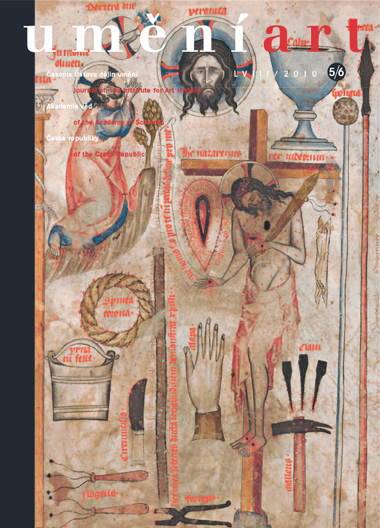Martin Pavlíček
"Un gruppo in creta". Mazzuoliho bozzetto Extáze sv. Bernarda Tolomeie v Opavě
In 1940 the Silesian Museum in Opava acquired a terracotta sketch of an unknown saint amidst angels, a piece resembling the work of Antonio Raggi. Later the work was identified as the Vision of St Dominicus in the style of Gian Lorenzo Bernini. In reality, it is a bozzetto of the Ecstasy of St Bernardo Tolomei by the sculptor Giovanni Antonio Mazzuoli of Siena (1644-1706). In 1693 Mazzuoli carved a monumental marble sculpture for the high altar of the Olivetan Church of San Benedetto fuori Porta Tufi on the outskirts of Siena. After the church was closed (1820), the sculpture was moved to the high altar of the Church of San Cristoforo in Siena, where it remains today. There are few differences between the bozzetto and the final work. The composition is identical, except in the final work the angel on the left is looking at the viewer. The angels' heads are similarly shaped and have soft locks of hair, while the monk's habit has been carved out in sharp lines. The biggest difference is in the conception of Tolomei's face. While the man in Mazzuoli's bozzetto is the more common beardless type, in the marble he has a beard. But this rendering also exists in the iconography of Tolomei, as evidenced by Sodoma's fresco of St Bernardo Tolomei located in the Palazzo Pubblico in Siena. Giovanni Antonio Mazzuoli's authorship of the work is established in archival records. In 1767 the sculptor Giuseppe Maria Mazzuoli (1727-1781) drew up an inventory of a collection of bozzettos and sculptures that he had inherited from relatives. Under item number 149 he wrote 'un gruppo in creta con S Bernardo in estasi retto da due Angeloni, originale di detto Gio. Antonio'. In the past this item was linked to the sculpture in the Church of San Cristoforo, and we can link it directly to the bozzetto in Opava. Both the sketch and the final work stand out for their high quality and how successfully they manage to capture the theme of ecstasy. Baroque sculpture in Rome, from which Mazzuoli developed his style, contains several works on this theme and some of them influenced the sketch. The bozzetto most resembles the relief of the Ecstasy of St Francis of Assisi (from before 1647) by Francesco Baratta on the altar of the Chapel of Raimondi in the Church of San Pietro in Montorio.
Full-text in the Digital Library of the Czech Academy of Sciences:
https://kramerius.lib.cas.cz/uuid/uuid:288b2d26-750d-2cdc-8a51-e57709d3627c
< back

